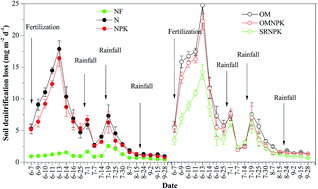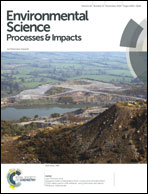The influence of N-fertilization regimes on N2O emissions and denitrification in rain-fed cropland during the rainy season
Abstract
The effects of nitrogen fertilization regimes on N2O emissions and denitrification rates were evaluated by in situ field incubation experiments with intact soil cores and the acetylene block technique. Intact soil cores were collected from long-term field experiments involving several N fertilization regimes, including single synthetic N fertilizer (N), organic manure (OM), synthetic N, P, K fertilizer (NPK), organic manure with synthetic fertilizer (OMNPK), crop straw residue with synthetic fertilizer (SRNPK) and no nitrogen fertilizer (NF). N2O was sampled from the head space of the cylinders to determine the daily N2O emission and denitrification rate. The results showed that the N2O emissions were greatly influenced by the specific fertilization regime even when the same nitrogen rate was applied. The mean N2O emissions and denitrification rates from the N, OM, NPK, OMNPK and SRNPK treatment were 2.22, 2.66, 1.94, 2.53, 1.67 and 4.63, 5.96, 4.15, 5.41, 3.65 mg per m2 per day, respectively. The application of OM significantly increased the N2O emission and denitrification compared to the application of NPK because of the high soil organic carbon (SOC) content of OM. However, SRNPK increased the SOC content and decreased the N2O emissions significantly compared to the OM and OMNPK treatments because the addition of crop straw with a high C/N ratio to soil with a low inorganic N content induced N immobilization. The contents of soil nitrate and ammonium were the main limiting factors for N2O emissions in a positive regression as follows: Ln (N2O) = 2.511 + 1.258 × Ln ([NH4+] + [NO3−]). Crop straw residue combined with synthetic fertilizer is recommended as an optimal strategy for mitigating N2O emissions and denitrification-induced N loss in rain-fed croplands.


 Please wait while we load your content...
Please wait while we load your content...